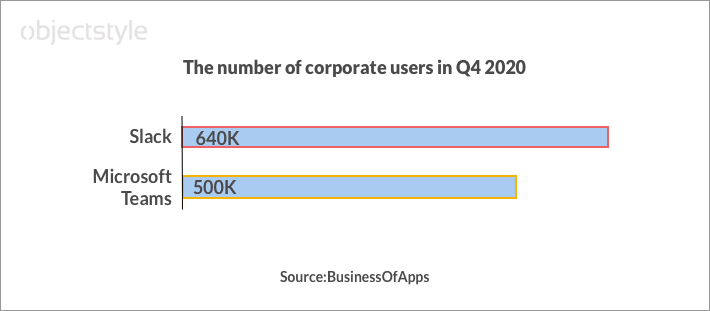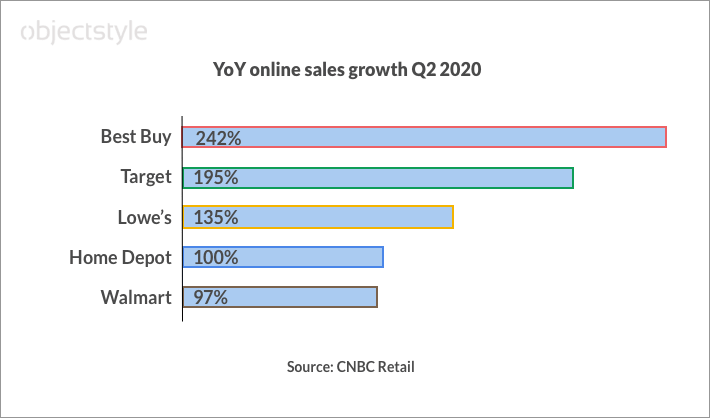
The economic downturn brought about by the current health crisis is unlike any previous slowdown in recorded history, experts say. While some businesses plummeted, others (and especially tech startups and Big Tech) have grown significantly. As reported by McKinsey, the US saw over 1.5 million new-business applications in Q3 2020 – almost twice the number registered during the same period in 2019.
The pandemic prompted global society to accelerate its efforts in digitization, robotization, and medical research. Many companies were quick to restructure themselves and adapt to the new reality. As Microsoft’s Satya Nadella put it, “we’ve seen two years’ worth of digital transformation in two months”.
According to McKinsey, many executives said that they implemented changes like building supply-chain redundancies, improving data security, and increasing the use of advanced technologies 20 to 25 times faster than they thought possible.
Let’s look at the areas where companies have gotten clients and investments and new business perspectives thanks to the pandemic.
Telecommunications: Zoom, Slack, and others
Zoom, a teleconferencing app maker, was all over the news when the pandemic started – albeit sometimes for the wrong reasons. As most people’s lives abruptly moved online, Zoom went from a platform known only to some professionals to pretty much everyone’s go-to video chat software. By June 2020, the number of daily Zoom meetings soared 6000% and the company’s revenue grew 169%. All in all, the video conferencing market is expected to go from $14 billion in 2019 to $50 billion by 2026, according to a Global Market Insights report.
Slack is arguably the most popular work/group chat app out there. On December 1st, Salesforce revealed plans to buy Slack for $27.7 billion (by comparison, Facebook acquired Instagram for $1 billion in 2012 in what was considered a record-setting deal.)
A close competitor of Slack, Microsoft Teams, had 20 million active users at the end of 2019. That number jumped to 44 million active users by March 2020 and 75 million by April once lockdowns started to be introduced. Microsoft promoted its Teams app aggressively through a variety of channels and managed to increase the user base even further – to 115 million people – by November 2020. As of now, Slack boasts 640K corporate users, while Microsoft Teams has 500K companies signed up, which is not a radical difference. In addition, 91 of the Fortune 100 companies are said to be using Microsoft Teams.

Online entertainment: streaming services, gaming, and e-sports
When most Europeans started working from home in the spring of 2020, Netflix and YouTube agreed to temporarily ditch HD video to prevent the Internet from breaking. Together, the two video streaming giants account for nearly 25% of all Internet traffic.
By mid-2020, Netflix signed up 10 million new users and kept investing in show production. However, this success story is slightly overshadowed by the fact that it’s hard to keep making movies in the middle of the pandemic. If the health crisis persists, some viewers may begin to feel weary of the service.
In the game streaming world, Amazon’s Twitch and Google’s YouTube Gaming saw a 10% and a 15% increase in the number of viewers, respectively. Luckily for these services, game streamers can create content from their home studios.
A subset of the gaming world, eSports, has also been enjoying momentum and threatening to divert viewers from analog sports styles. In the US, there was a 70% increase in the number of eSports viewers in 2020.
E-commerce
When the pandemic started, one of the first activities to move online was shopping. The penetration of eCommerce exceeded analysts’ wildest expectations: in the US, it had been predicted to reach 24% of all retail sales by 2024, but ended up hitting 33% by July 2020.
Best Buy’s online sales grew 242% in Q2 2020 as home office workers stocked up on electronics and computer accessories. While Gap’s total online sales increased “only” 95%, its Old Navy division saw 136% more ecommerce sales than a year ago.

The surge in sales was not profitable for everybody, though. With more online selling comes the need for additional packaging and shipping. So despite the increase in eCommerce sales, Gap reported a net loss in Q2 2020.
Other businesses that implemented curbside pickup, closed some physical locations, laid off staff, or were really smart about their delivery policies fared better. Amazon reported record sales and profits between April and June last year, even though it had spent $4 billion on sanitizing its warehouses and paying for overtimes and bonuses.
In the food department, Instacart reported a $10 million profit, despite having burned through $300 million in 2019. The same-day delivery company’s sales increased 450% from December 2019. Uber made more money through Uber Eats in Q3 2020 than it did through its traditional ride hailing service.
Telehealth and robotics
Telehealth is another industry that has grown exponentially since Covid-19 began. Telemedicine platforms like Amwell have been experiencing a surge in users, and startups like Biofourmis have partners and investors knocking on their door.
In many telehealth clinics, the number of remote screenings/visits catapulted to new highs. For example, Cincinnati Children’s Hospital Medical Center, which recorded only 2,000 telehealth visits in all of 2019, saw 5,000 televisits a week in July 2020. The hospital’s president, Michael Fisher, believes that such visits could account for 30% of all healthcare in the future.
Led predominantly by China, the robotics revolution accelerated in manifold ways since the start of the pandemic. The most widely-used types of robots have been patrol bots (used to patrol quarantined areas), disinfection robots, and other kinds of server-, helper-, and delivery-bots.
Big tech
While many believe that the stock market is a bubble that might burst eventually, if we look at equity value added for some of the biggest names in tech, we’ll see that the big four – Amazon, Apple, Google, and Facebook – saw their stock price shoot up since the start of 2020.
Amazon’s market capitalization grew by $401.1 billion by June 2020 – an all-time high for the company. One of the non-obvious reasons could have been the increased demand for Amazon’s cloud services, or AWS, as hordes of businesses migrated online.
While Apple had lost $435 billion in market capitalization in spring of 2020 (mostly due to closed outlets and the initial shock to the stock market), in December 2020 it reported a 121% growth of its equity value.
Google’s stock added $68.1 billion by mid-2020. Search advertising may have taken a nosedive in early March, but it has largely recovered since then. Plus, the growth has been driven by the increased use of other Google’s services, like its Cloud Platform.
Facebook had hit a similar benchmark by June 2020 – its stock gained $85.7 billion in value. While 2020 was a difficult year for Facebook, because it faced pressure from policy makers and activists for allowing coronavirus “fake news” to sneak past its moderation algorithms, it also launched new video chat and livestream features, which helped improve engagement.
TL; DR
While industries like tourism and air travel hit bottom in 2020, there were others whose profits and market cap grew significantly. Among the pandemic winners are online chat makers Zoom and Slack; streaming services Netflix and Twitch, eCommerce giants Amazon and Best Buy; some telehealth and robotics companies; and Big Tech firms like Google and Apple.
Related Blogs

From robot cleaners to robo-chefs to entertainers: what kinds of robots are helping us fight COVID-19?
LEARN MORE